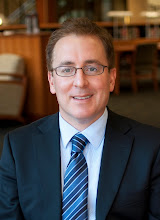Even in an age characterized by increasing virtual presence and communication, speakers still need physical places in which to exercise First Amendment liberties. This book examines the critical intersection of public speech and spatiality. Through a tour of various places on what the author calls the "expressive topography," the book considers a variety of public speech activities including sidewalk counseling at abortion clinics, residential picketing, protesting near funerals, assembling and speaking on college campuses, and participating in public rallies and demonstrations at political conventions and other critical democratic events. This examination of public liberties, or speech out of doors, shows that place can be as important to one's expressive experience as voice, sight, and auditory function. Speakers derive a host of benefits, such as proximity, immediacy, symbolic function, and solidarity, from message placement. Unfortunately, for several decades the ground beneath speakers' feet has been steadily eroding. The causes of this erosion are varied and complex; they include privatization and other loss of public space, legal restrictions on public assembly and expression, methods of policing public speech activity, and general public apathy. To counter these forces and reverse at least some of their effects will require a focused and sustained effort - by public officials, courts, and of course, the people themselves.
Despite the proliferation of communication technologies speech out of doors continues to occur with some frequency in this and other countries. People still gather in public places to make their voices heard. Occasionally, speech out of doors leads to legal reform; very infrequently, it may lead to regime change. Public speech also remains critical to social movements. The thesis of my book is that we are in danger, in the U.S., of losing public space, the critical platform for speech out of doors, owing to regulations, privatization, public planning, technological alternatives, and public attitudes.
Although I will occasionally post items about the book itself (reviews, commentary, etc.), my primary intent is to publicize and analyze issues relating to public speech, assembly, dissent, and contention in traditional public (and quasi-public) places. I remain intensely interested in the current and future prospects for speech out of doors, both in the U.S. and elsewhere. I welcome your readership and invite your comments.
Tim Zick


No comments:
Post a Comment